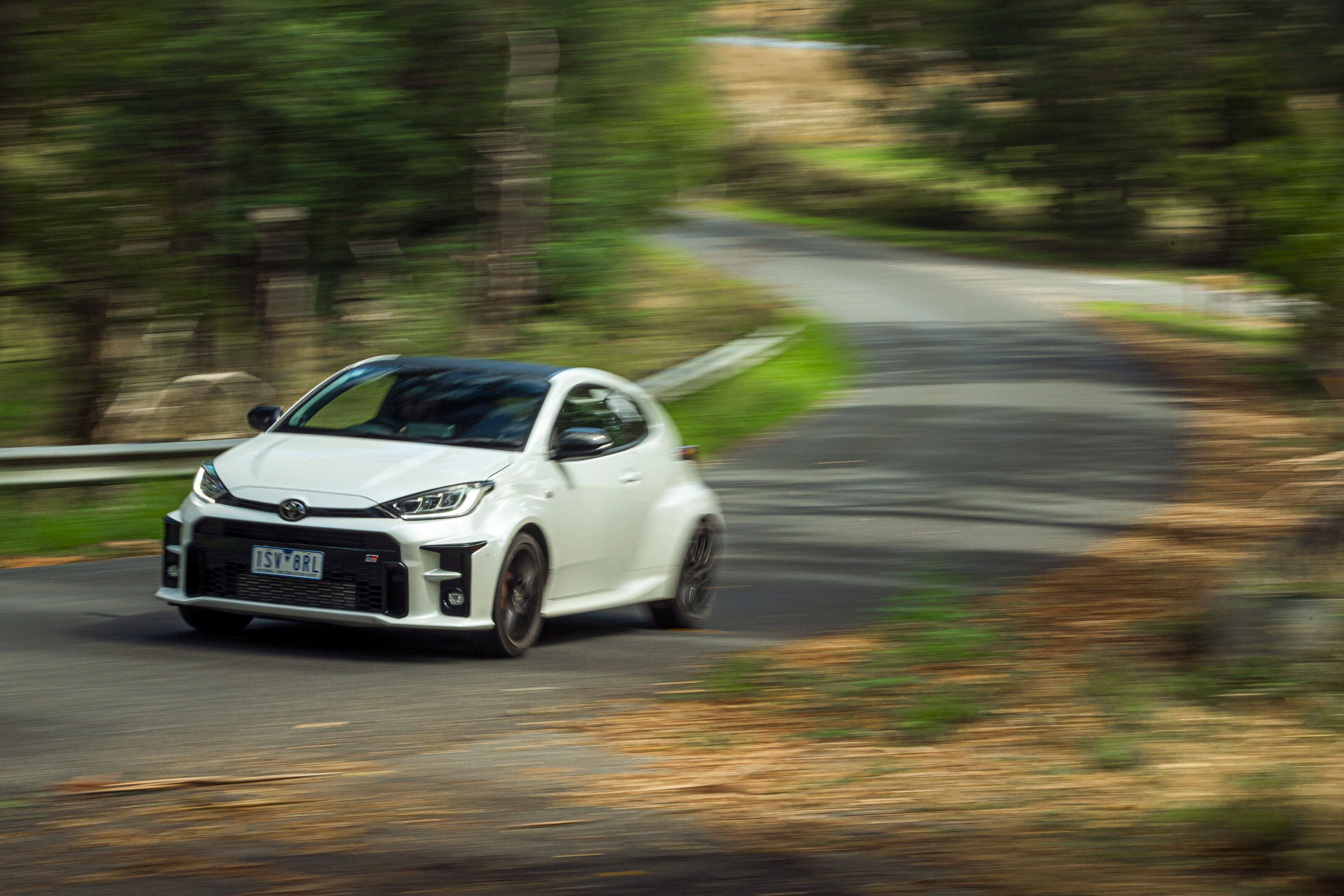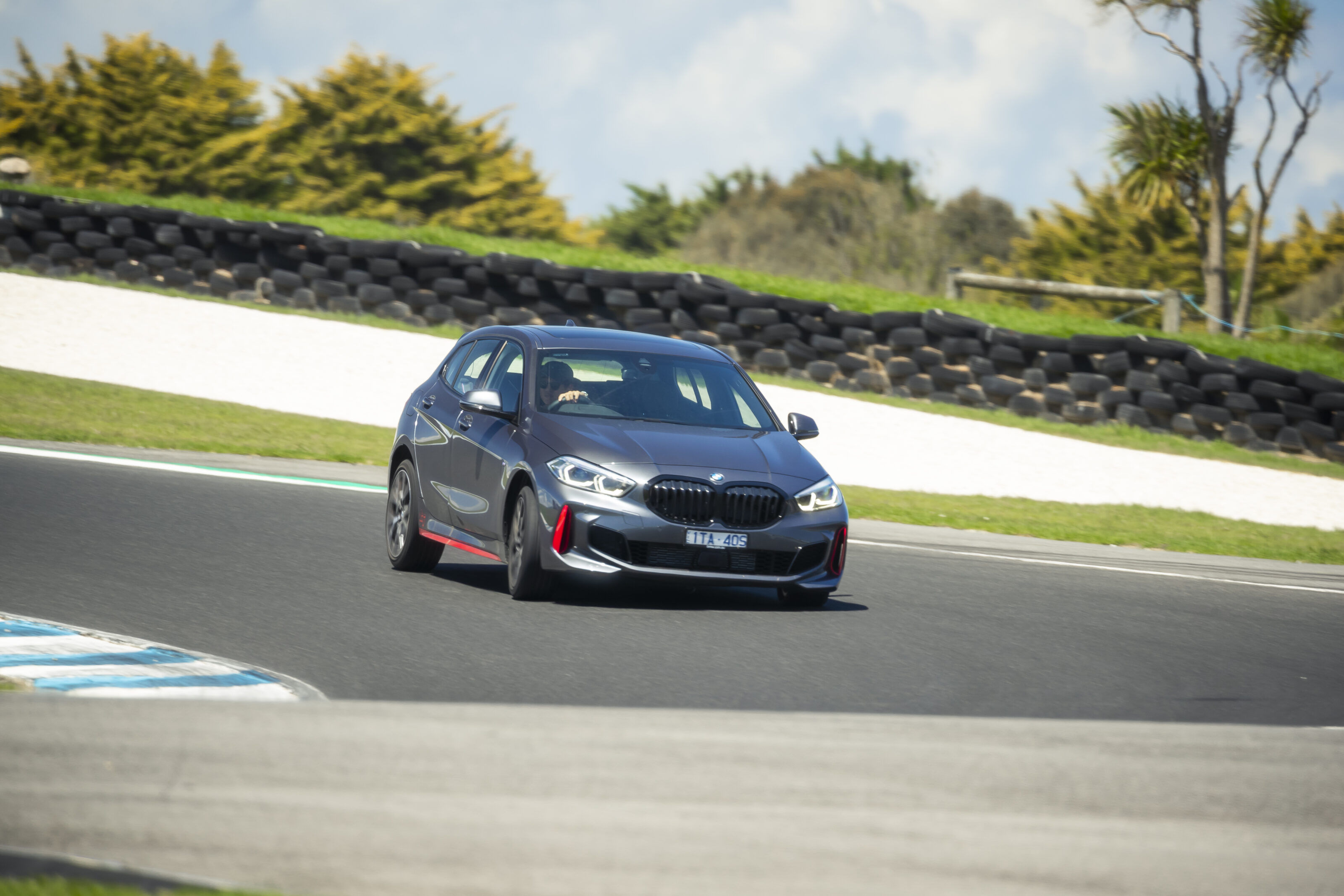With memories of the Evo X’s resounding category win in the recent BFYB shootout still fresh in our minds, Mitsubishi’s current front-line weapon arrived at PC08 carrying some weighty expectations.
This Performance Car Of The Year article was first published in MOTOR Magazine November 2008.
Familiarity breeds affection, so some say, and after spending a lot of time recently in all road-going Evo X combinations – there are three – we’ve become of the Lancer that is just as quick, but a helluva lot nicer all-round, than its predecessors.
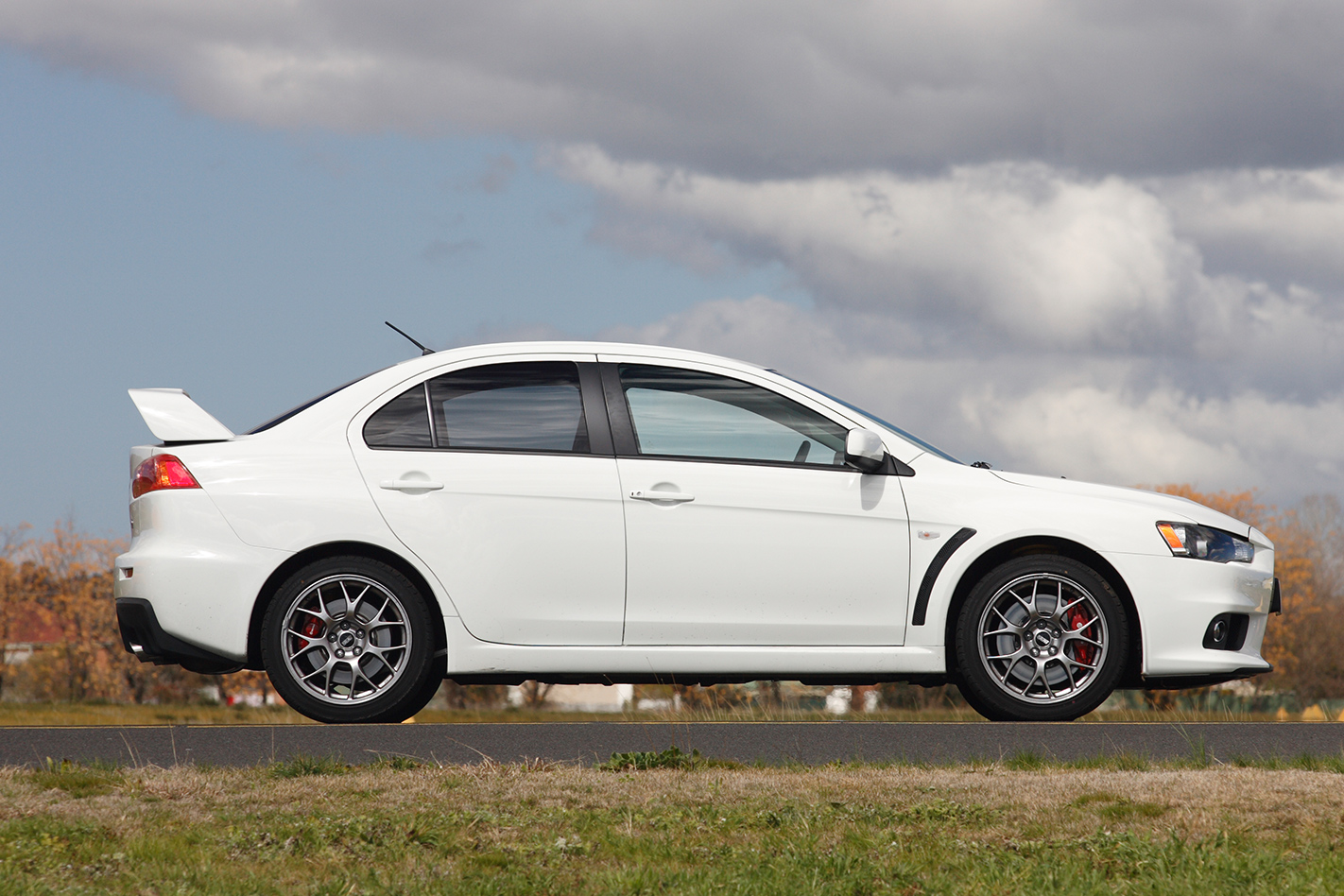
In other words, this jigger is mechanically identical to the top-spec MR version, but without the ‘flappy-paddle’ TC-SST (twin-clutch) gearbox, a unit that has polarised opinion in the MOTOR crew and seems to work brilliant only some of the time.
The five-speed drew fewer gripes, the only one being why it lacks an entire ratio over current manual gearbox convention and, as a result, the spread feels a bit long between ratios. On road you’d hardly notice, but around at Wakefield’s tight second and third gear confines it demanded a fair bit of hustling to keep the turbo four between its 3500rpm peak torque (366Nm) and claimed 6500rpm peak power (217kW).

You can draw easy conclusions by the fact that the Evo’s 1:09.4 was fourth quickest around the circuit – a mere 1.7sec off the lead pace – but a lowly eighth fastest down the straight, but this actually paints only part of the picture.
Firstly, the no-brainer is that it could easy do with more than 217kW and 366Nm to haul its near-one-and-half tonne around: although with its 5.66 0-100km/h and 13.8sec 0-400m times at Coota show it clearly isn’t hanging about. But secondly – and something raised by more than one judge – was that the Evo could do with more lateral grip.
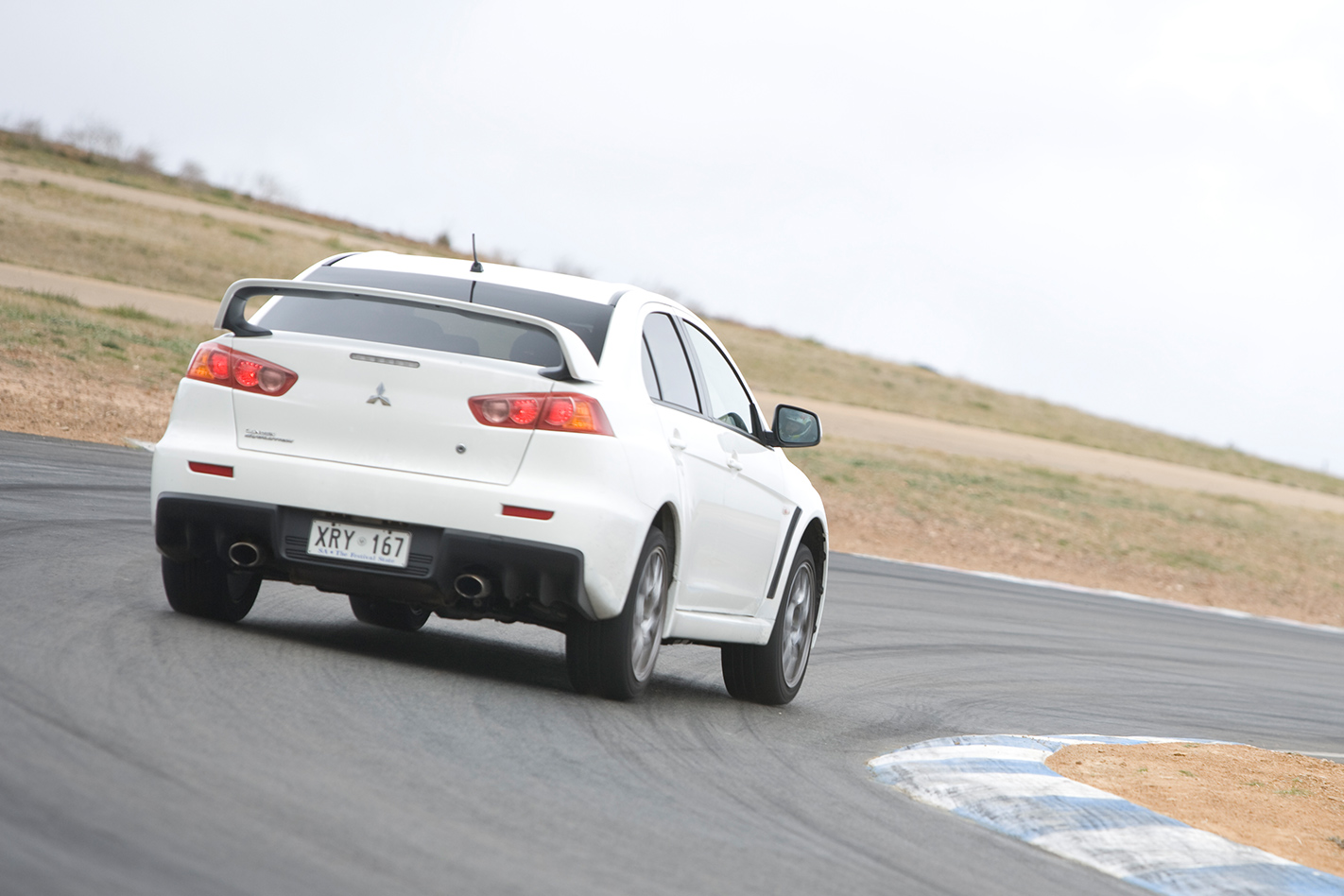
And the chassis’ fun-loving obedience masks the fact that many of Evo’s PC08 rivals were quicker through the mid-point of the curves, where they’d simply grip and go with less histrionics. However, throwing the Evo down our twisty, bumpy Canberra road loop proves that the handling package really shines in real world conditions.
The chassis’ compliance soaks up the worst surfaces; it maintains unshakable composure everywhere; the all-wheel-drive works miracles without any inhibition or protest, and it responds instantly to the ever-changing road conditions: all the stuff that just doesn’t translate into numbers on a page.
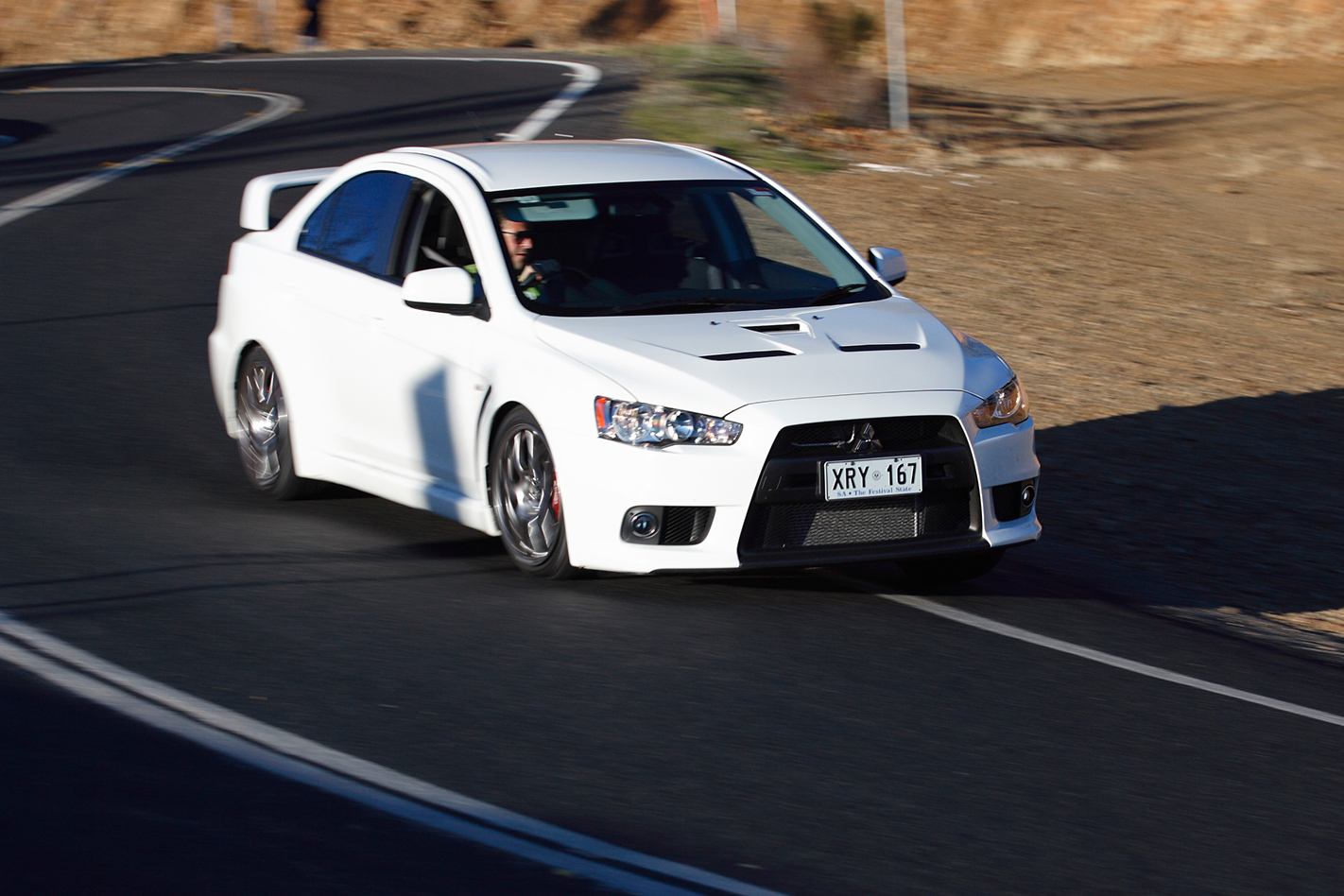
Thing is, the all-paw turbo-four German will set you back $106,050. The Japanese equivalent – with room for five adults, no less – asks for just $64,990.




